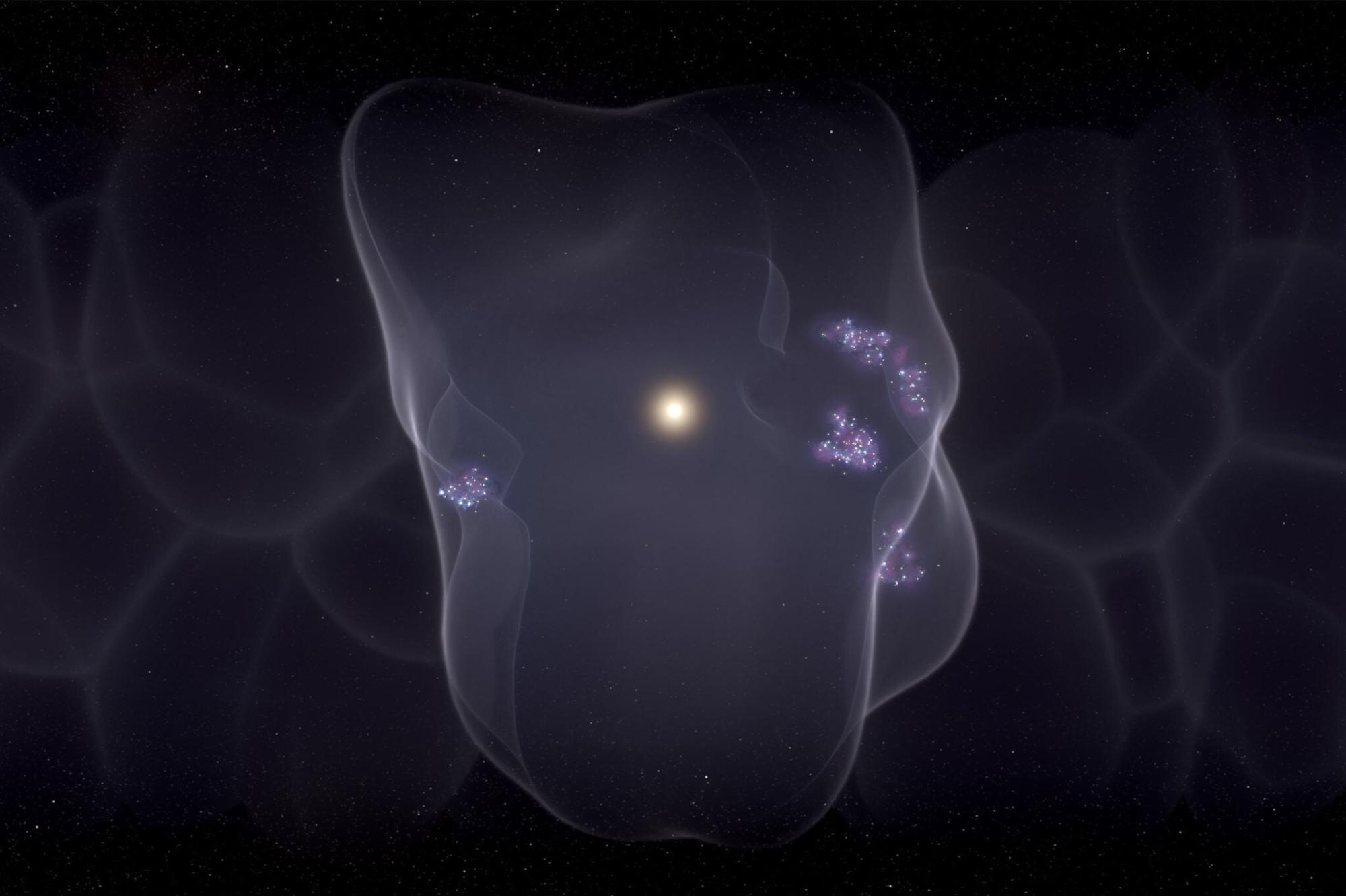For decades, astronomers have known that the Earth and Sun lie in what is known as the Local Bubble. Now, For the first time, a team of astronomers has been able to retrace the history of this star-filled neighborhood.
 Image Credit: Whitehead, N., (2022) Astronomers find origin of stars that surround Earth. [online] Harvard Gazette. Available at: https://news.harvard.edu/gazette/story/2022/01/astronomers-find-origin-of-stars-that-surround-earth/
Image Credit: Whitehead, N., (2022) Astronomers find origin of stars that surround Earth. [online] Harvard Gazette. Available at: https://news.harvard.edu/gazette/story/2022/01/astronomers-find-origin-of-stars-that-surround-earth/
Based at the Centre for Astrophysics (CfA), Harvard and Smithsonian and the Space Telescope Science Institute (STScI), astronomers were able to demonstrate how young stars near our solar system were formed.
The paper, recently published in the journal Nature offers observational constraints on supernova-driven star formation across our galactic neighborhood.
Through a reconstruction of the evolutionary history of the Local Bubble, the astronomers show how a sequence of events brought about this vast 1000-light-year-wide bubble that is responsible for the formation of nearby, young stars.
This is really an origin story; for the first time we can explain how all nearby star formation began.
Catherine Zucker, Co-Author, Astronomer and Data Visualization Expert
3D Spacetime Animation
The findings centered on a 3D animated map of the solar neighborhood that reveals that star-forming regions and young stars sit on the surface of the Local Bubble. These findings are now enabling astronomers to move towards a better understanding of the origins of the Local Bubble and its influence on the gas around it.
The Local Bubble’s shell is shown as a closed surface, but evidence suggests it could be a ‘Galactic chimney’, having blown out of the disk a few hundred parsecs above and below the Galactic plane.
Catherine Zucker, Co-Author, Astronomer and Data Visualization Expert
The 3D spacetime animation allows the scientists to apply new data and advanced techniques to show a chain of events triggered by a supernova which pushed interstellar gas outward and created the bubble-like structure primed for star formation.
After the presumed birth of the Local Bubble 14 Myr ago, we observe four subsequent epochs of star formation at the surface of its expanding shell, taking place approximately 10 Myr ago, 6 Myr ago, 2 Myr ago and the present day.
Catherine Zucker, Co-Author, Astronomer and Data Visualization Expert
Today, around seven known star-forming molecular clouds – dense areas of space ripe for star formation – are situated on the bubble’s surface. Furthermore, the bubble is continually expanding but has lost a significant amount of speed and now grows at a near-constant rate of about 4 miles each second.
Tracing The Expanding Bubble
Using information acquired through Gaia, a space-based observatory launched by the European Space Agency (ESA), the team was able to apply their theories to the data and piece together a 14 million history of star formation using supernova models and 3D maps of the local bubble.
By tracing the expanding bubble, astronomers were able to see how it sweeps up clouds of interstellar gas and dust on its surface which then collapse to form stars. The team also explained how the Earth’s Sun was outside this bubble initially, but around 5 million years ago was swept through the bubble on its trajectory through the galaxy.
Now, the Sun sits almost right in the center of the Local Bubble, which offers astronomers the perfect view of star-forming processes across the bubble’s surface. These processes and bubbles were first conceived around 50-years ago, and now the astronomers are questioning just how many more bubbles there might be.
Mapping out other potential bubbles and their relationship to each other will offer astronomers a new understanding of the role that dying stars and supernovae play in giving birth to new ones and in the evolution and structure of galaxies, including the Milky Way.
References and Further Reading
Zucker, C. and Goodman, A., et. al., (2022) Star formation near the Sun is driven by expansion of the Local Bubble. Nature, [online] Available at: https://www.nature.com/articles/s41586-021-04286-5
Whitehead, N., (2022) Astronomers find origin of stars that surround Earth. [online] Harvard Gazette. Available at: https://news.harvard.edu/gazette/story/2022/01/astronomers-find-origin-of-stars-that-surround-earth/
Disclaimer: The views expressed here are those of the author expressed in their private capacity and do not necessarily represent the views of AZoM.com Limited T/A AZoNetwork the owner and operator of this website. This disclaimer forms part of the Terms and conditions of use of this website.